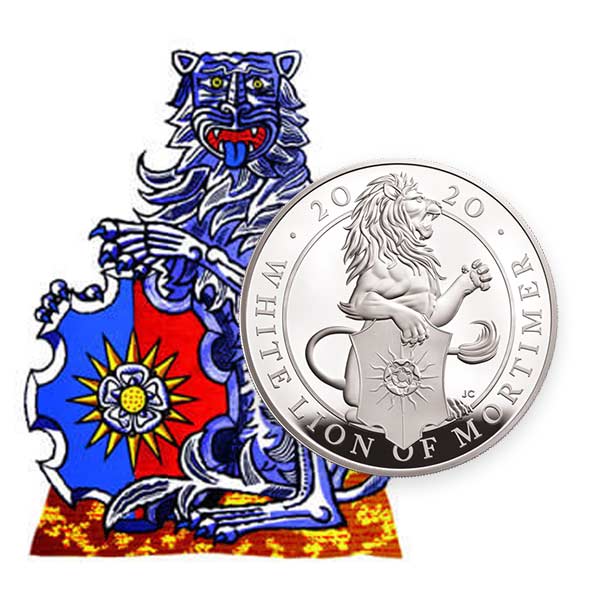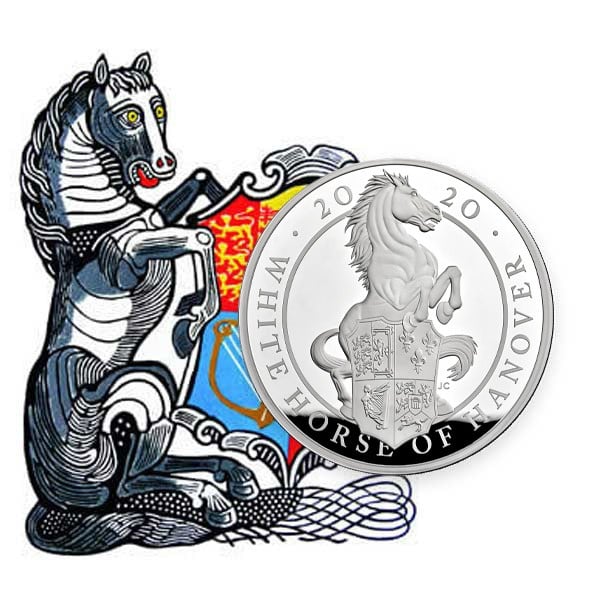
The Queen’s Beasts – A Story of Royal Heraldry and Heritage
Our story begins with ten beasts of myth and legend, painstakingly sculpted and arranged to form an imposing guard of honour at the entrance of Westminster Abbey. It was 2 June 1953 and they had been commissioned for a very important day – Her Majesty The Queen’s coronation. This is how the fascinating collection of Queen’s Beasts gained their name, with each one telling the story of the pivotal events and twists of fate that shaped the course of history, tracing royal bloodlines from medieval times to the present day.
Heraldry Brought to Life
At some six feet high, centuries of intriguing heraldry were brought to life in the designs by sculptor James Woodford, OBE. They were inspired by a series of statues at Hampton Court Palace which were made more than 400 years ago for Henry VIII, commonly known as the King's Beasts. This time, however, they were made to represent Her Majesty’s ancestry, from the iconic Lion of England to the mythical Yale of Beaufort with its golden spots – symbolic of royal heraldry spanning more than 1,000 years.
Recast on Coins
With so much history and symbolism to draw from, The Queen’s Beasts Collection reimagines these mighty creatures that represent the British monarchy. Unique to Her Majesty’s heritage, the eighth beast in the series is the White Horse of Hanover. Traditionally in heraldry, the horse will be found in arms as rampant or salient (in a fighting position), courant (running), or passant (walking) and trotting – can you work out which position the White Horse of Hanover takes?
Royal Mint designer Jody Clark is behind each of the coins in this series and his signature contemporary style is clear in his interpretation:
“I worked hard to give the muscles a level of realism and look of strength befitting this magnificent heraldic beast.”
Behind the Designs …
The Lion of England
- The lion is one of the first animals to appear on English royal emblems, and remains the most famous
- The lion is in the ‘rampant’ pose – representing majesty, strength, and military might
- It holds a shield depicting the Royal Arms of the United Kingdom
The Unicorn of Scotland
- The unicorn was adopted as a symbol of Scotland as early as the 12th century
- It wears a coronet around its neck like a collar, with a gold chain attached
- The shield shows the Royal Arms of Scotland
The Red Dragon of Wales
- Henry VII first adopted the Red Dragon as a symbol of his Welsh heritage
- The dragon is in profile – most common in heraldry and on the Welsh flag
- A quartered shield with leopards originate from Llywelyn ap Gruffydd, the last native prince of Wales
The Black Bull of Clarence
- The Black Bull dates back to The Queen’s Yorkist ancestors
- The bull is traditionally a symbol of power and strength
- The shield includes the golden lilies of France, added by Edward III to support his claim to the French throne
The Falcon of the Plantagenets
- Chosen by the Plantagenet king Edward III to embody his love of hawking
- It was said to be the favourite badge of Elizabeth I
- The falcon holds a shield depicting the personal badge of Edward IV
The Yale of Beaufort
- The Yale is a mythical beast with characteristics of an antelope or a goat
- The Yale of Beaufort was originally a symbol of Lady Margaret Beaufort, mother of Henry VII
- The portcullis seen on the shield is also part of the arms of Westminster City Council
The White Lion of Mortimer
- Unlike the Lion of England, this beast is uncrowned
- The Lion of Mortimer came to The Queen through Edward IV, the first of the Yorkist kings
- The ‘white rose en soleil’ is really a combination of two badges belonging to Edward IV and Richard III
The White Horse of Hanover
- The Queen inherited the White Horse from George I who was from Hanover
- The horse faces right – the opposite direction of the unicorn – to emphasise the difference between these similar beasts
- An unusually detailed shield represents England, Scotland, Ireland, France, and the House of Hanover
Discover great stories from history and how we're celebrating these moments within The Royal Mint
Read more








